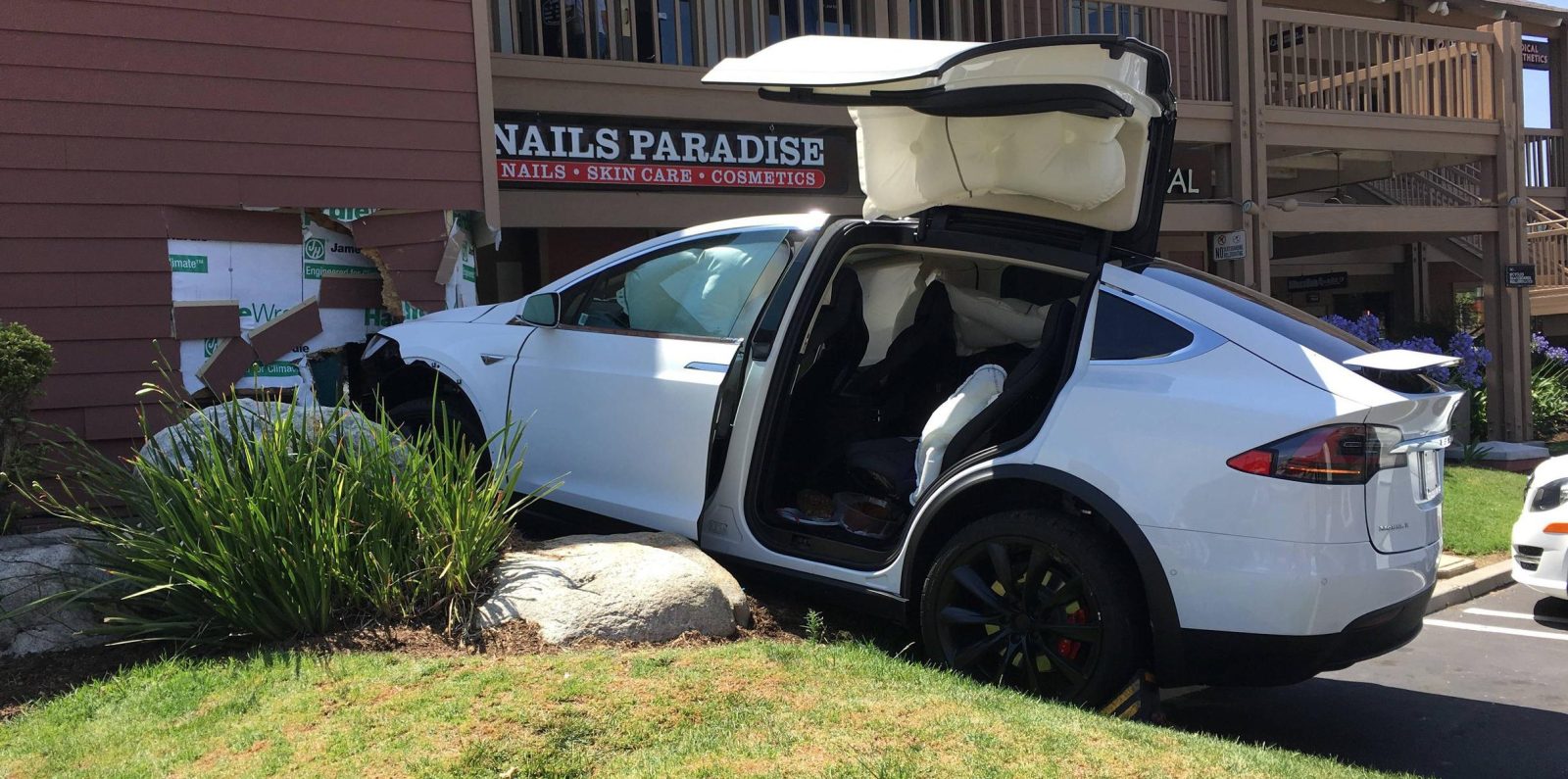
Tesla released a blog post to defend itself against claims of “unintended acceleration” that is being reviewed by NHTSA. The automaker says that the petition was started by a TSLA short seller who is betting against the company.
Last week, we reported that the National Highway Traffic Safety Administration (NHTSA) said that it is looking into claims that Tesla vehicles have a defect leading to “sudden unintended acceleration” after receiving a petition citing 127 claimed incidents.
As we stated at the time, several claims of sudden unintended acceleration involving Tesla vehicles have been made public over the years. The most publicized one involved a South Korean celebrity claiming his Model X accelerated on its own into his garage.
However, in every case, including that one, Tesla claimed that the car’s log showed that it was a user mistake due to pedal misapplication.
In one case, we were even able to have Tesla’s log verified by a third party, and it supported the automaker’s claims that it showed the driver pressed on the accelerator.
Now Tesla is defending itself against the claims with a new blog post called, “There is no ‘unintended acceleration’ in Tesla vehicles.”
In the post, Tesla states that the petition was started by a TSLA short seller:
This petition is completely false and was brought by a Tesla short-seller. We investigate every single incident where the driver alleges to us that their vehicle accelerated contrary to their input, and in every case where we had the vehicle’s data, we confirmed that the car operated as designed. In other words, the car accelerates if, and only if, the driver told it to do so, and it slows or stops when the driver applies the brake.
The short seller in question is Brian Sparks, who admitted currently holding a short position on Tesla’s stock. He gathered several complaints from Tesla owners regarding events of “sudden unintended acceleration.”
The automaker explained how it attempts to prevent those events:
While accidents caused by a mistaken press of the accelerator pedal have been alleged for nearly every make/model of vehicle on the road, the accelerator pedals in Model S, X, and 3 vehicles have two independent position sensors, and if there is any error, the system defaults to cut off motor torque. Likewise, applying the brake pedal simultaneously with the accelerator pedal will override the accelerator pedal input and cut off motor torque, and regardless of the torque, sustained braking will stop the car. Unique to Tesla, we also use the Autopilot sensor suite to help distinguish potential pedal misapplications and cut torque to mitigate or prevent accidents when we’re confident the driver’s input was unintentional. Each system is independent and records data, so we can examine exactly what happened.
Tesla says that it is working with NHTSA to review the complaints:
We are transparent with NHTSA, and routinely review customer complaints of unintended acceleration with them. Over the past several years, we discussed with NHTSA the majority of the complaints alleged in the petition. In every case we reviewed with them, the data proved the vehicle functioned properly.
As we reported last week, NHTSA’s Office of Defects Investigation (ODI) will be looking into the claims made in the petition.
Electrek’s Take
Like I wrote in my last post about this, I doubt that there’s an actual defect leading to this.
However, Tesla needs to be careful here. For example, I don’t like the title, “There is no ‘unintended acceleration’ in Tesla vehicles.”
Yes, there is. Otherwise, it would mean that all those complaints are coming from owners who intended to accelerate. While I disagree with them when they claim the cars accelerated on their own, I do believe that most of them didn’t intend for the car to accelerate.
Therefore, there are events of “unintended acceleration” in Tesla vehicles.
The question is: Is it due to a defect or due to driver error?
I think Tesla’s data makes it clear that it is due to driver error. Tesla can still use this as an opportunity to improve safety and see if there’s more they can do to avoid driver errors, and it looks like they are doing that.
As for the short seller situation, it’s clear that this guy has other motives than safety, but it doesn’t mean that the customer complaints aren’t true. So I don’t think there’s much value in going after that angle.
What do you think? Let us know in the comment section below.
FTC: We use income earning auto affiliate links. More.






Comments